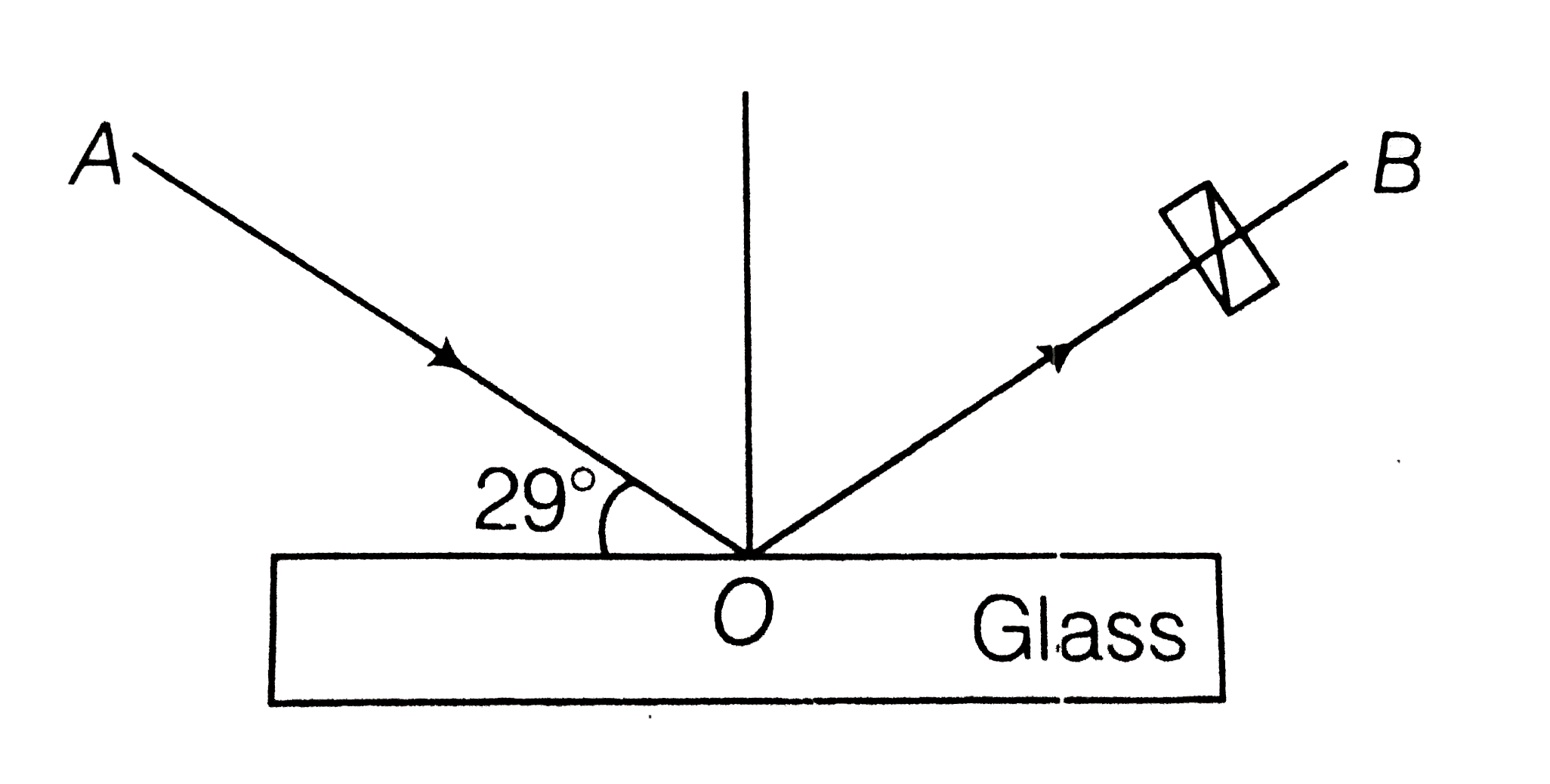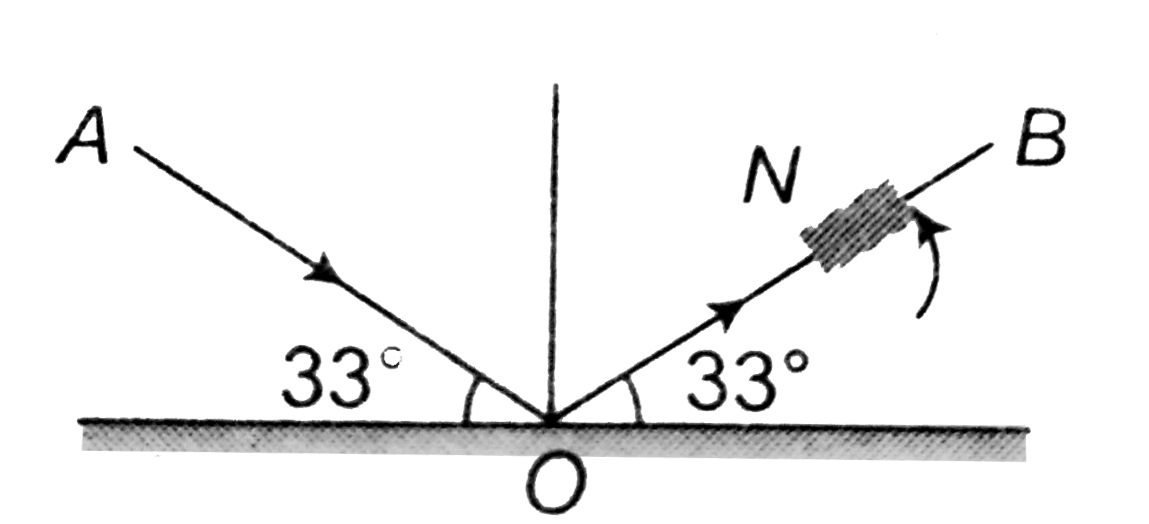A light beam is incident on a rectangular glass plate (μ=1.54) The reflected light OB passes through a nicol prism.
On observing the transmitted light while rotating the prism, it is seen that

intensity of light reduces to zero
intensity of light decreases and then increases
there is no change of intensity of light
intensity of light reduces to zero slowly and then starts to increase
The correct Answer is:B
The relected light is partially rotatas, θ changes. Hence, intensity will show the variation proportional to cos2θ
i.el=l0cos2θ
When angle increases cos2θ
decreases and vice - versa .
Topper's Solved these Questions
Similar Questions
Knowledge Check
When white light passes through a glass prism
Ared coloured ray undergoes maximum deviation.Bgreen coloured ray undergoes minimum deviation.Cblue coloured ray undergoes minimum deviation.Dviolet coloured ray undergoes maximum deviation.When a white light passes through a hollow prism then
AThere is no dispersion and no deviationBDispersion but no deviationCDeviation but no dispersionDThere is dispersion and deviation bothWhen a ray of light passes through glass slab, refraction of light occurs___
Athe deviation of red light is maximum.Bthe deviation of violet light is maximum.Cthe deviation of blue light is maximum.Dall rays deviate equally.
When a white light passes through a hollow prism, then there is
View SolutionA beam of light AO is incident a glass slab (μ=1.54) in the direction show. The reflected ray OB is passed through a Nicol prism. On viewing through a Nicol prism, we find on rotating the prism that

View SolutionA beam of light AO is incident on a glass slab (μ=1.54) in a direction as shown in figure. The reflected ray OB is passed throught a Nicol prism. On viewinf through a Nicole prism, we find rotating the prism that (tan−11.54=57∘)

View SolutionFor a light ray passing through a prism
View SolutionMonochromatic light passes through a prism. Compared to that in air, inside the prism the light's
View Solution
